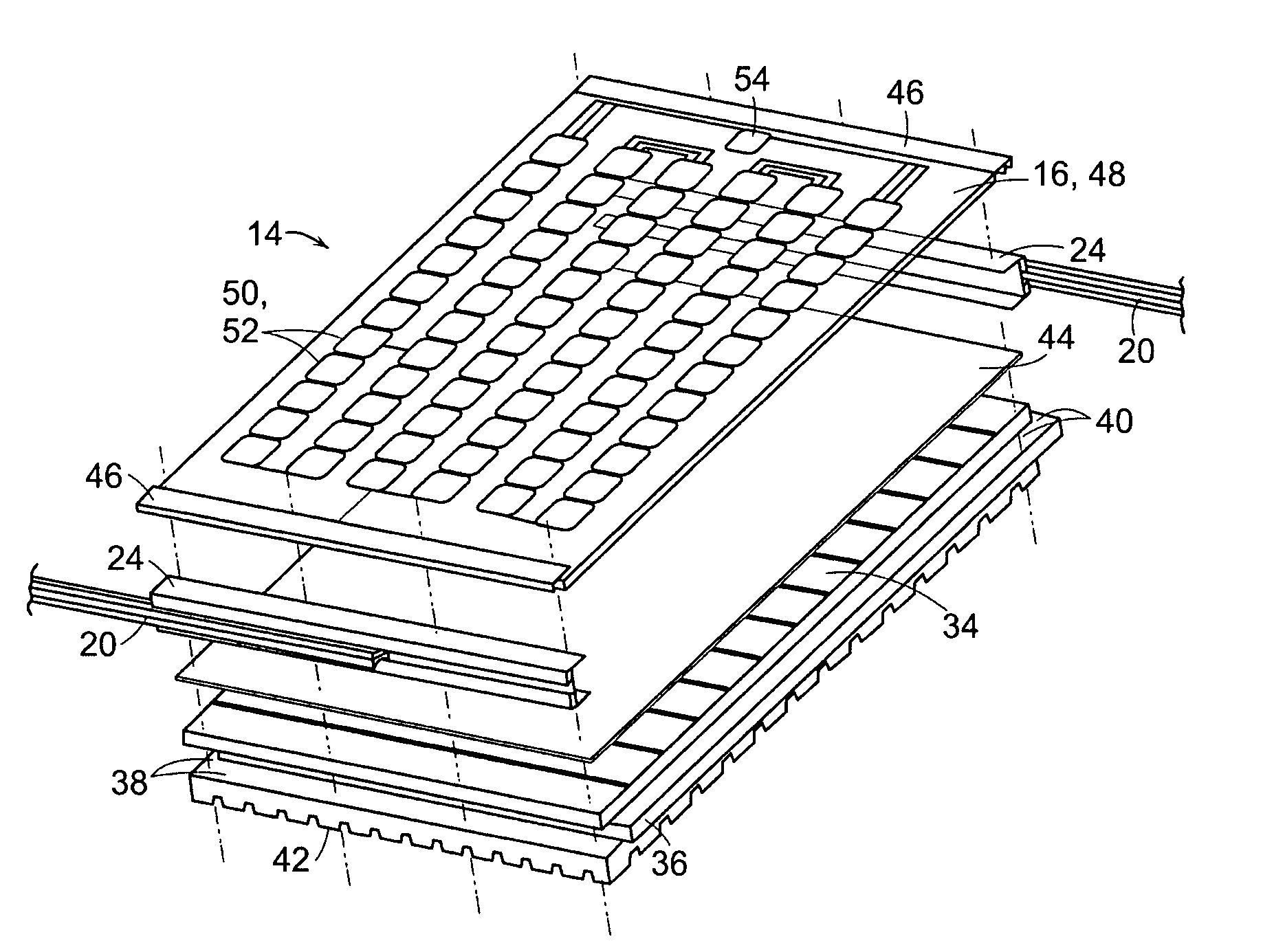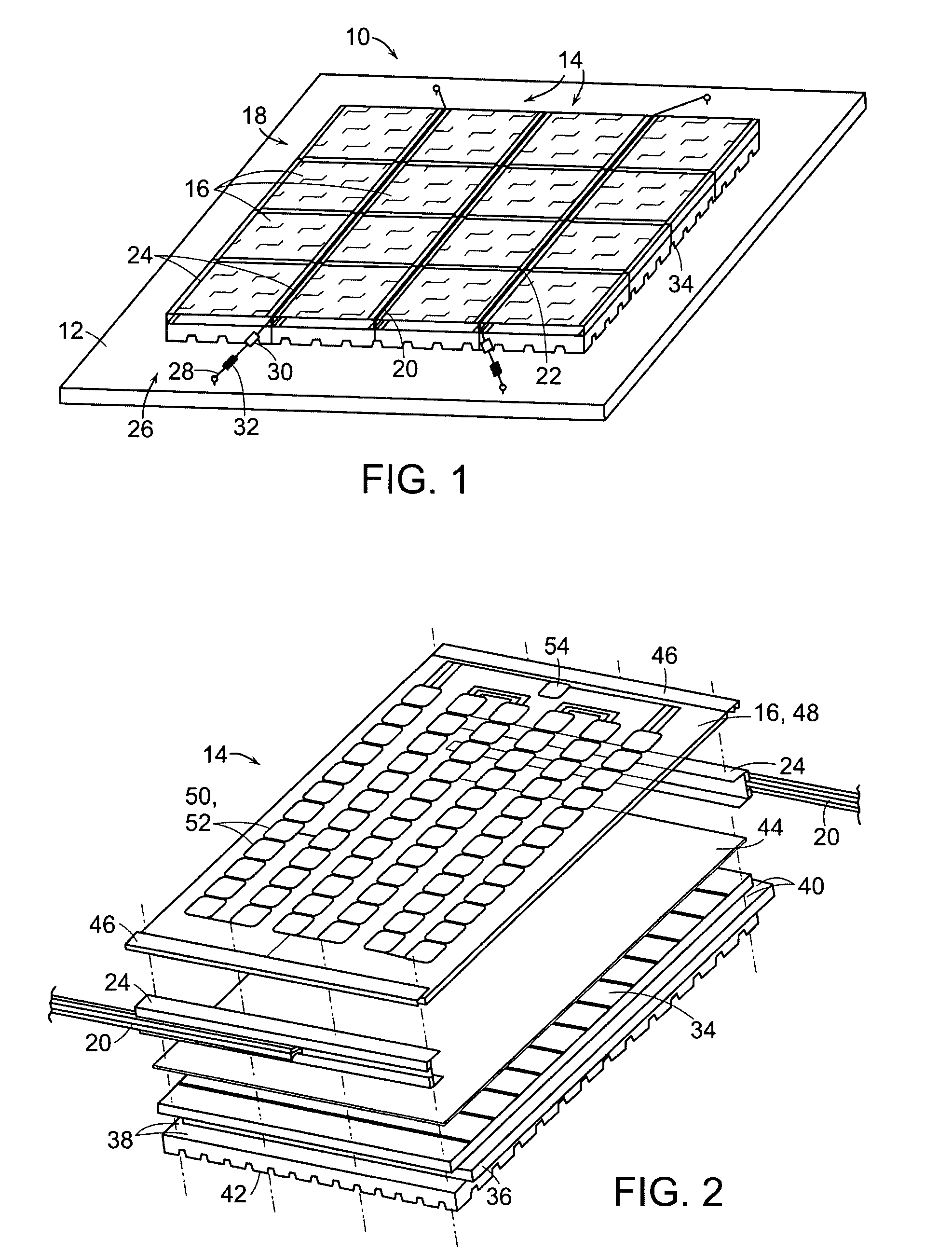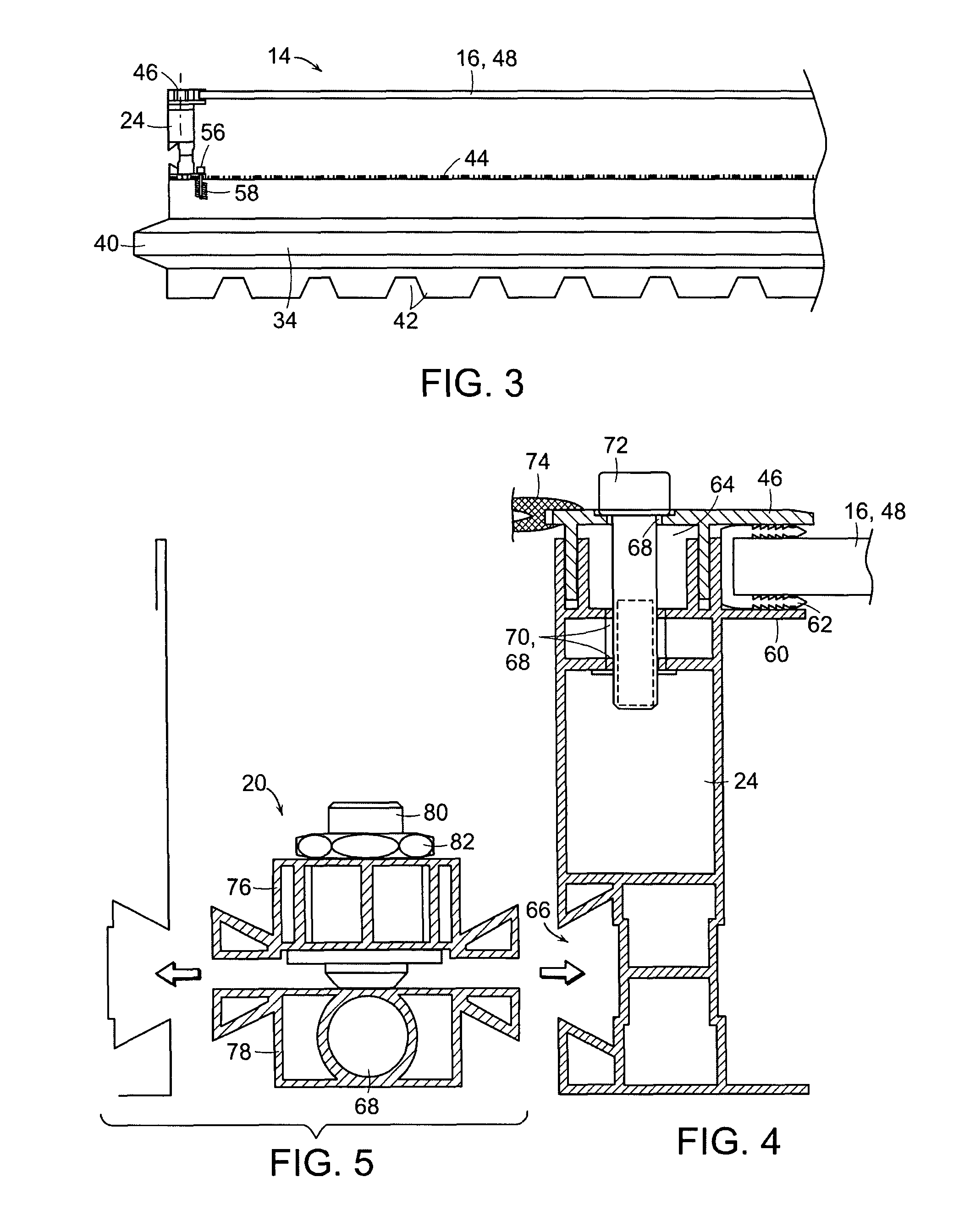Light-weight photovoltaic system
a photovoltaic system and light weight technology, applied in the direction of photovoltaics, solar heat collector mounting/support, solar heat collector safety, etc., can solve the problems of system dependent on gravity cannot be employed on a light roof structure, significant damage to the cover as well as the insulation of the roof, etc., to achieve the effect of improving durability
- Summary
- Abstract
- Description
- Claims
- Application Information
AI Technical Summary
Benefits of technology
Problems solved by technology
Method used
Image
Examples
Embodiment Construction
[0033]FIG. 1 depicts a lightweight photovoltaic system 10 placed on a substructure 12 in direct engagement therewith. The schematically depicted substructure 12 may, for instance, be a flat roof of a building (not shown). As shown, the photovoltaic system 10 consists of sixteen substantially rectangular individual photovoltaic modules 14 arranged in horizontal rows and vertical columns and supporting photovoltaic panels 16. By rigidly interconnecting all of the photovoltaic modules 14, a stable rectangular module panel 18 is formed in the manner of a matrix from all the rows and columns of individual photovoltaic modules 14. Any occurring loads and stresses are safely absorbed by and distributed over the matrix. The system 10 is mounted on the substructure 12 in direct engagement therewith. Each photovoltaic module 14 is a prefabricated one and consists of a rectangular photovoltaic panel 16 mounted on a substantially rectangular board 34 to be described. For assembling the module p...
PUM
 Login to View More
Login to View More Abstract
Description
Claims
Application Information
 Login to View More
Login to View More - R&D
- Intellectual Property
- Life Sciences
- Materials
- Tech Scout
- Unparalleled Data Quality
- Higher Quality Content
- 60% Fewer Hallucinations
Browse by: Latest US Patents, China's latest patents, Technical Efficacy Thesaurus, Application Domain, Technology Topic, Popular Technical Reports.
© 2025 PatSnap. All rights reserved.Legal|Privacy policy|Modern Slavery Act Transparency Statement|Sitemap|About US| Contact US: help@patsnap.com



